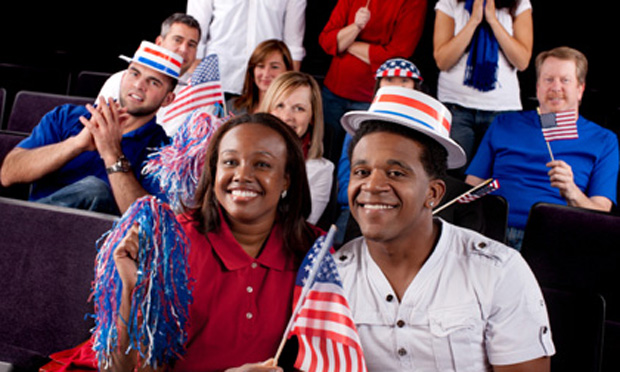As the 2016 presidential election nears, both Republicans and Democrats have courted minority voters – a group that is growing in numbers and electoral clout. Black and Hispanic people make up the country’s two largest minority voting blocs and, as such, are especially important in close races. Various news agencies and other political observers have explored the question of whether a Republican can win the White House without winning over voters of color, who generally, according to a 2012 Gallup poll, identify as Democrats or independents.
Over the years, political scientists have studied the voting habits and behaviors of racial and ethnic minorities. One area of focus is voter turnout. While the minority population has increased – the Hispanic population alone grew more than 50 percent from 2000 to 2014 — voter turnout among minority groups does not seem to be keeping up. It has long lagged behind that of white voters. In 2014, for example, the voting rate for non-Hispanic white adults was 45.8 percent while the rate was 39.7 percent for black adults and 27 percent for Hispanics, a report from the U.S. Census Bureau shows. A decade previously, voting rates for those groups were 48.8 percent, 42 percent and 30.8 percent, respectively.
So, as political parties work to attract diverse voters, what factors influence whether they will show up at the polls on Election Day? Are minority populations more likely to vote if a candidate on the ballot is of the same race or ethnicity? Researcher Bernard L. Fraga of Indiana University looked at these issues in a 2015 study published in the American Journal of Political Science. For the study,“Candidates or Districts? Reevaluating the Role of Race in Voter Turnout,” Fraga took data collected from a nationwide voter registration database and combined it with data on congressional candidates. He analyzed congressional general and primary elections from 2006, 2008 and 2010 to gauge turnout among demographic groups.
Key findings from his study include:
- Having a political candidate of the same race or ethnicity on the ballot does not, by itself, prompt a larger voter turnout among minority groups.
- Turnout is often greater for minority voters when they live in a congressional district where their racial or ethnic group represents the majority of the citizen voting-age population (CVAP). For black and Hispanic voters specifically, turnouts are higher when each group makes up a larger portion of the electorate – regardless of the race of the candidates listed on the ballot.
- When no black congressional candidate is on the ballot, the general-election turnout for black voters is, on average, 40 percent in a district where black people make up 10 percent of the citizen voting-age population. The turnout is considerably higher — an average of 49.3 percent — in a district where black people are 50 percent of the voting-age population.
- In the absence of a Hispanic candidate, the general-election turnout for Hispanic voters is 6.4 percentage points higher in a voting district where Hispanic people make up 40 percent of the voting-age population compared to a district where they comprise 10 percent of the voting-age population.
This study builds upon previous research to show that the racial and ethnic makeup of an electorate is linked to minority-voter turnout. The author recommends further research to explore the cause of the trend. He suggests that these results be considered when evaluating plans to change voting districts. “Considering [voter] participation as well as demographic representation calls for a new metric to judge what is fair when crafting district boundaries,” Fraga states. He also notes that as the nation’s minority populations grow, voting districts will become more diverse, which could result in future changes in political participation.
Related research: A 2015 study published in the American Journal of Political Science looks at how preregistration, or the registration of youth before they reach voting age, influences voter turnout. A 2015 study from the University of South Carolina suggests that the Democratic Party and civil-rights organizations can play an important role in mobilizing black voters if they strengthen their organizational features. A 2009 study by Harvard University offers insights about voter participation in presidential primaries and caucuses.
Keywords: black voters, Latino voters, Hispanic voters, elections, campaigns, race, voter ID, voter turnout, voter participation


Expert Commentary